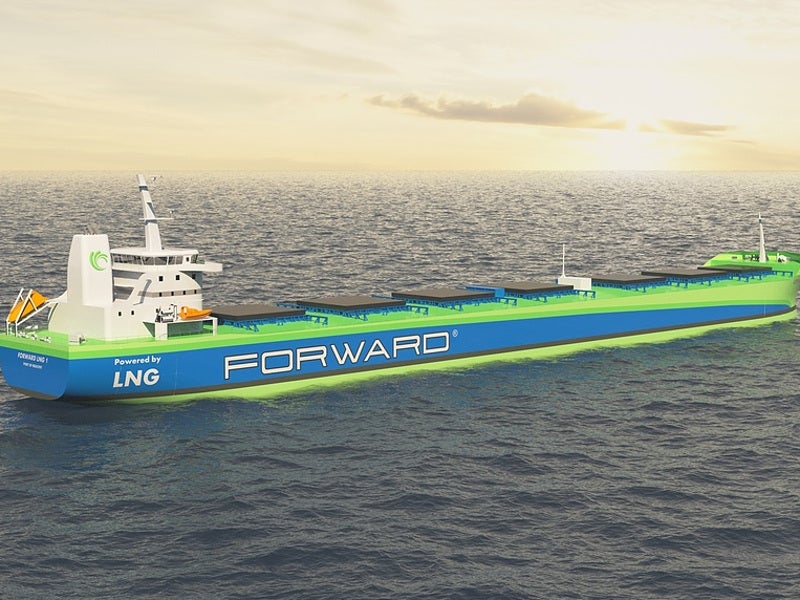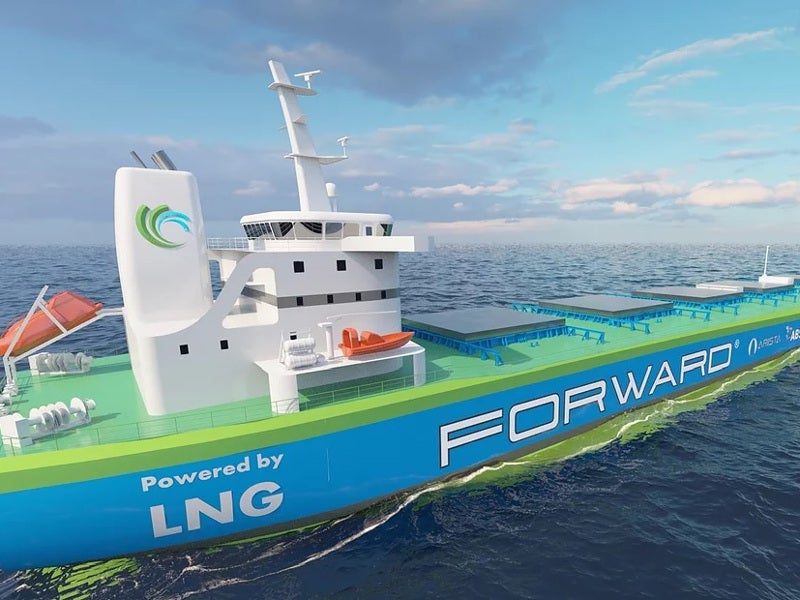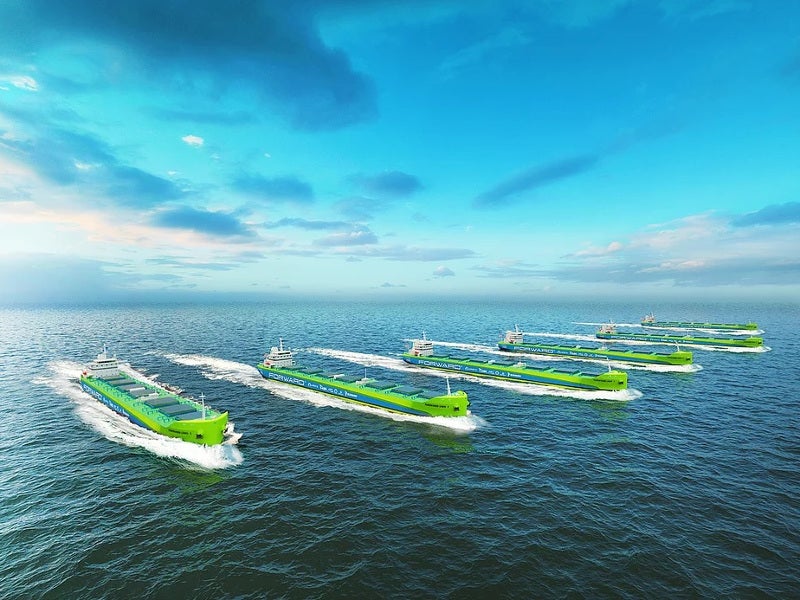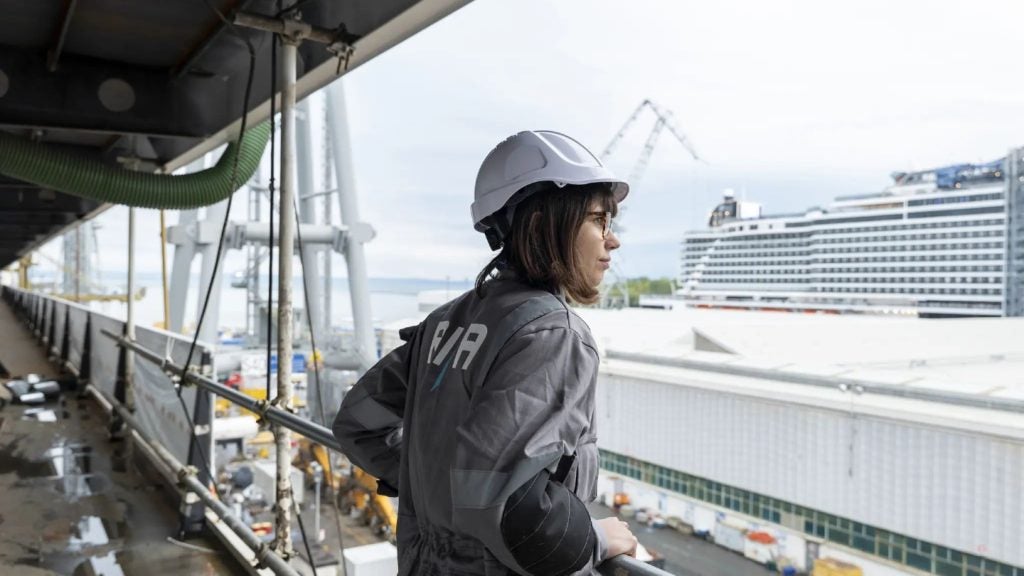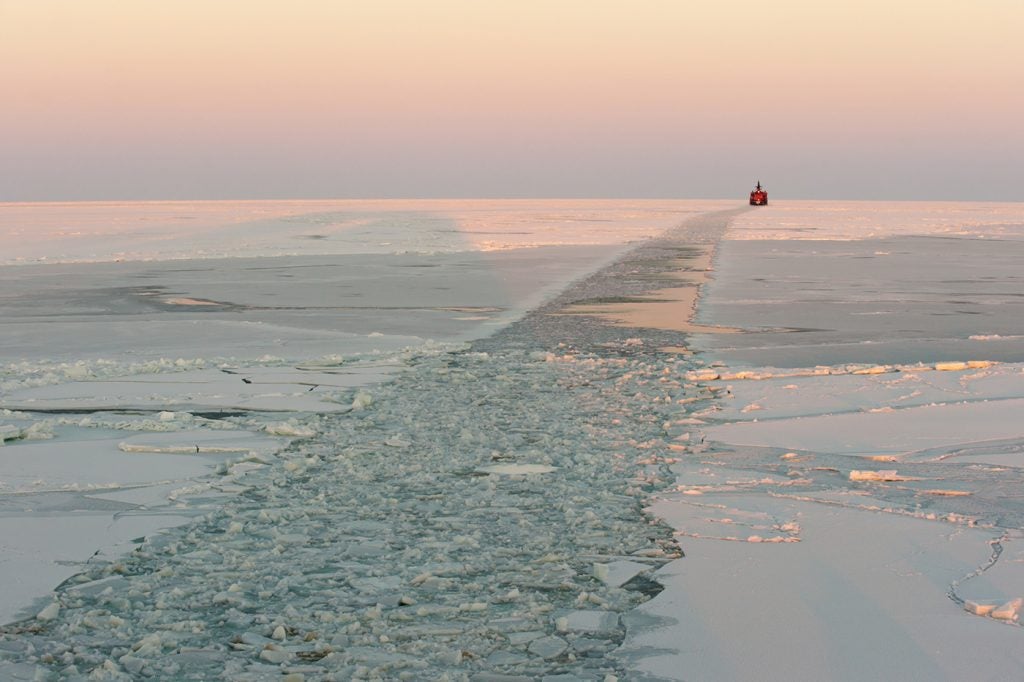Forward Bulker 84-LNG is a class of new liquefied natural gas-powered dry bulk carries being developed by Forward Maritime Group, a part of Arista Shipping, under the ‘Project Forward’ initiative.
The Kamsarmax-size bulk carriers will comply with the International Maritime Organization’s (IMO) Energy Efficiency Design Index 2025 standards, NOx Tier III and Marpol Annex VI SOx emission levels.
The Forward Bulker 84-LNG bulk carriers are scheduled to be delivered between 2020 and 2023. The vessels will operate under the Forward Ships brand.
Project Forward background
Project Forward was conceptualised by Arista Shipping in 2013 to reduce global ship emissions by encouraging the usage of LNG as a marine fuel.
Led by Arista Shipping, the Project Forward involves participation from a group of industry leaders, including American Bureau of Shipping (ABS), Deltamarin, Wärtsilä, Shell Western LNG, and Gaztransport & Technigaz (GTT).
Forward Maritime signed a letter of intent with Jiangsu Yangzijiang Shipbuilding Group for the construction of up to 20 Forward Bulker 84-LNG vessels in April 2018.
Eniram, a subsidiary of Wärtsilä, signed a memorandum of understanding (MoU) with Forward Maritime to support the development of monitoring and optimisation tools for the bulk carriers, in May 2018.
Shell is responsible for setting up the LNG bunkering infrastructure to support the operations of new bulk carriers, while GTT is involved in the development of a membrane-type tank for the storage of LNG fuel on board the vessel.
Forward Bulker 84-LNG design and features
The new bulk carrier will feature an advanced streamlined hull design optimised in collaboration with Deltamarin and classification society ABS. The hull form will integrate an innovative propulsion design incorporating dual-fuel engines.
The engines will be placed above the gearbox centreline to further optimise the hull lines. The machinery arrangement was granted its first official patent right by the Korean Intellectual Property Office in January 2019.
The Forward Bulker 84-LNG carrier will have an overall length of 238m, a beam of 32.2m, moulded depth of 20.3m, and an air draft of 44m. The gross tonnage of each vessel will be 46,000t.
Cargo capacities
Each vessel will be equipped with seven dry bulk cargo holds with side rolling-type two-panel hatch covers. The cargo holds will have a total grain carrying capacity of more than 96,500m³, which comprises six units with the capacity to hold 14,300m³ each, and the remaining units with a grain holding capacity of 11,300m³.
The Forward Bulker 84-LNG carrier will be fitted with tanks to store 2,570m³ of LNG, 1,380m³ of low-sulphur marine gas oil (LSMGO), 100m³ of lubrication oil, 400m³ of freshwater, 300m³ of washing water, 50m³ of greywater, 30m³ of blackwater, and 25,000m³ of ballast water. It will be equipped with two ballast pumps with a transfer capacity of 1,250m³/hour each.
Forward Bulker 84-LNG propulsion details
The bulk carriers will be powered by two four-stroke medium-speed Wärtsilä 31DF main engines integrating twin-stage turbochargers with power take-off / take-out and take-in (PTO/PTI) capability.
The Wärtsilä 31 DF 8V will have a rated power output of 4,400kW, while the Wärtsilä 31 DF 10V engine will generate a maximum power of 5,500kW.
The propulsion system will incorporate a controllable pitch propeller (CPP) and two shaft generators fitted with variable frequency drives, avoiding the need for auxiliary generator engines.
The compact machinery layout will ensure high redundancy, low maintenance cost, and improved manoeuvrability.
The vessel will have an average service speed of 14k and will be able to remain at sea for up to 82 days or cover a distance of up to 23,600nm when fuelled by LNG. It can remain at sea for up to 154 days or achieve a maximum range of 44,500nm when running on dual-fuel.
The Forward Bulker 84-LNG bulk carrier is expected to generate up to 35% less CO₂, 80% less NOx, and 99% less SOx and particulate matter (PM) compared to conventional cargo ships.

